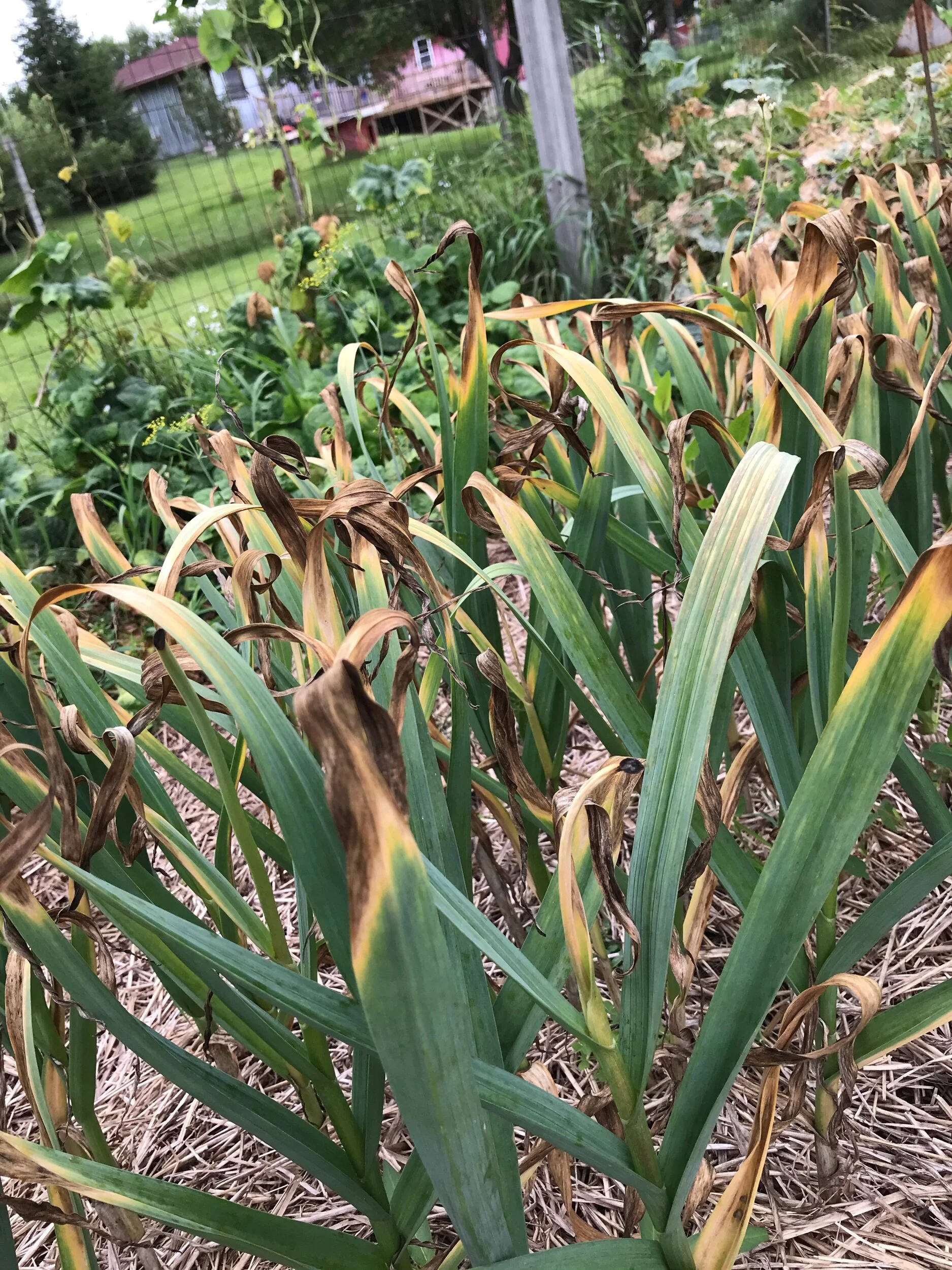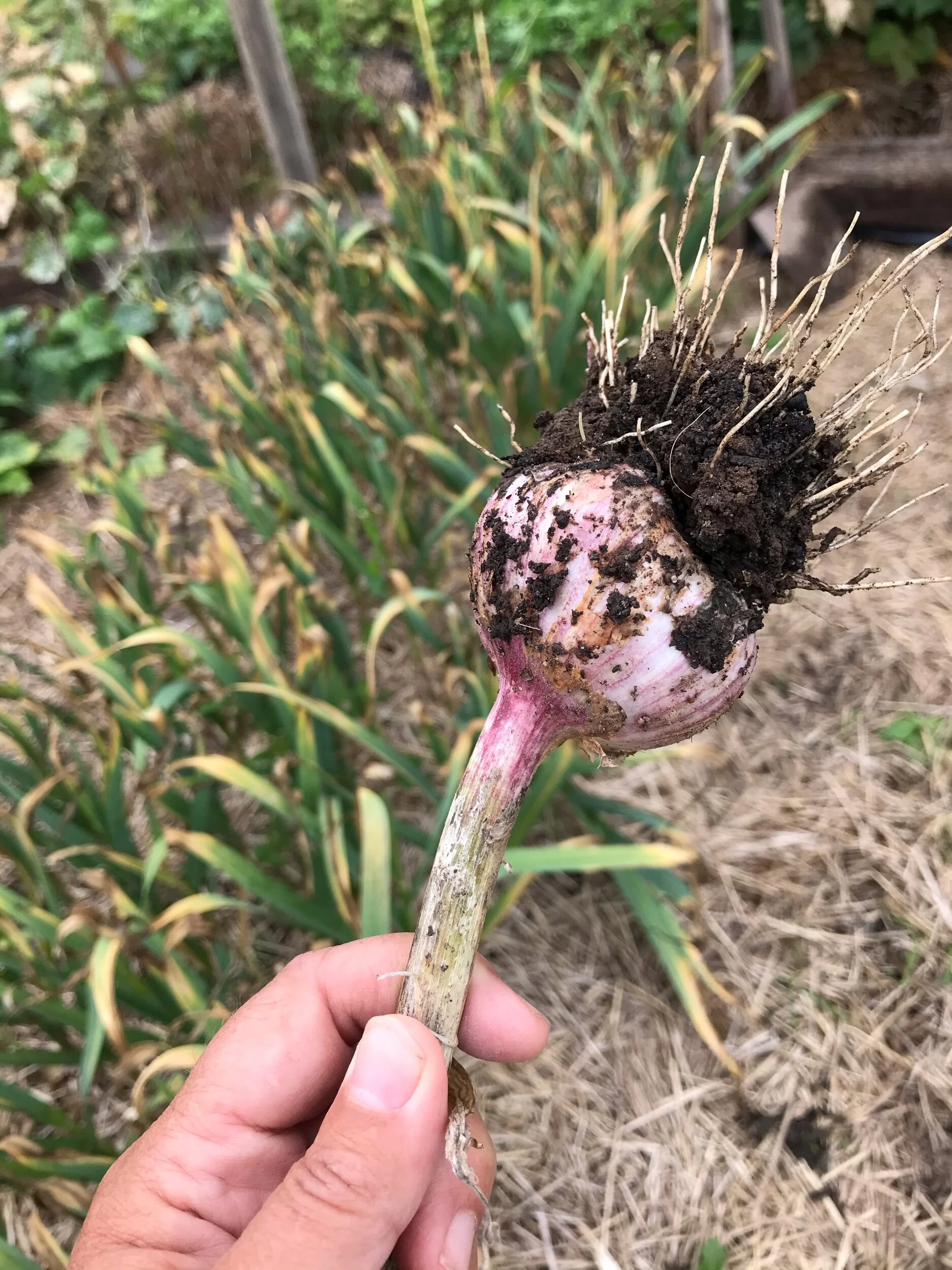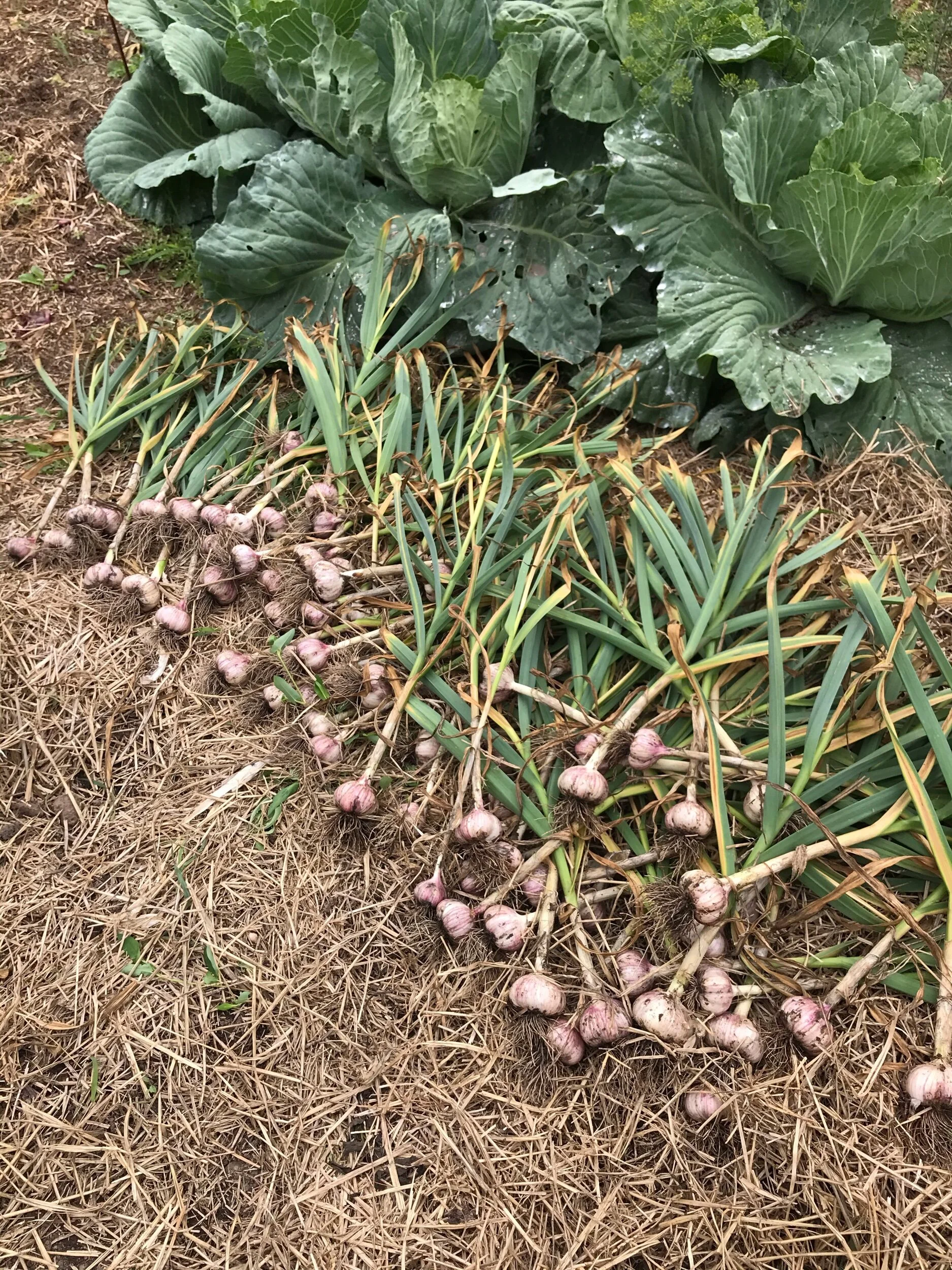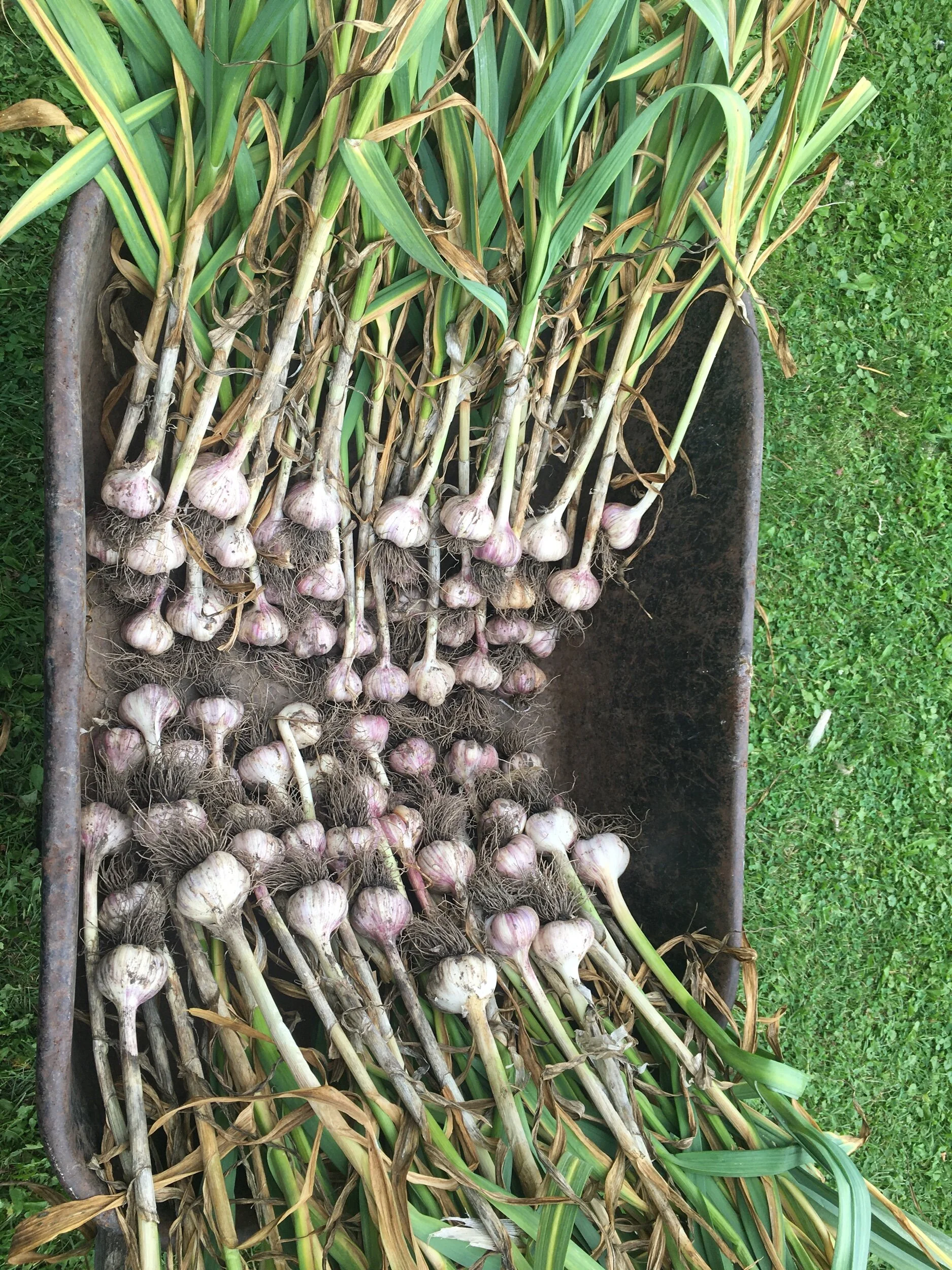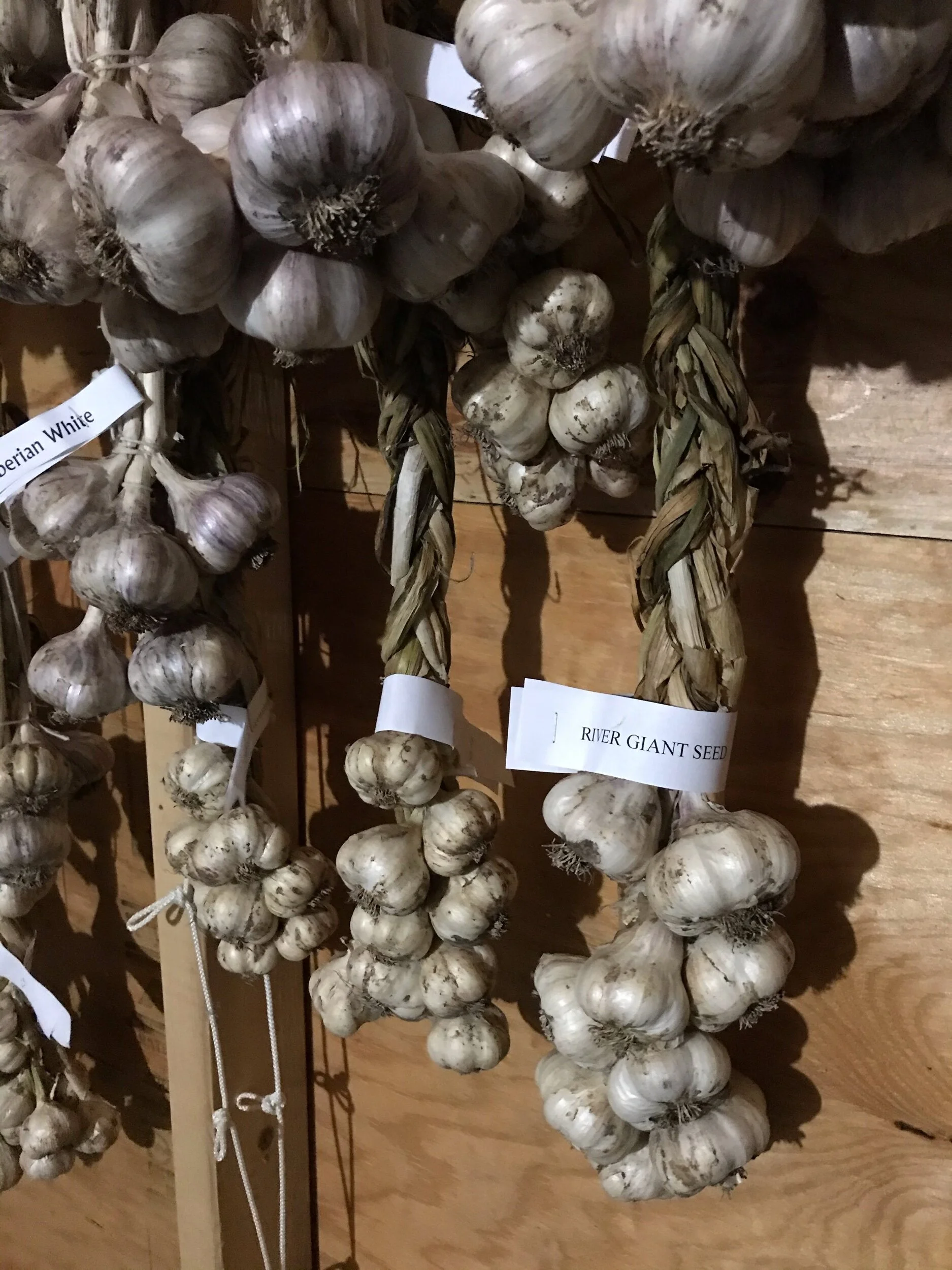Harvest journal: garlic
Last October I planted 300 garlic cloves. By early August, we harvested about the same number of bulbs.
The garlic is ready to harvest when the tops start to brown.
We have been planting garlic for at least 15 years now. The beginner mistake is to plant in the springtime. Garlic needs to establish its root system in the fall so it can take off in early spring. We found that any time we had a number of freeze/thaw events in a season, our garlic would be stunted. Covering the cloves with a layer of straw not only keeps the weeds at bay, it also helps even out the ground temperature, preserving those precious little roots.
Look at those great roots!
The Rocambole clean and ready to dry in the sun.
As we pull each bulb, we use the straw mulch to wipe the dirt off the bulbs. Doing this while the dirt is still damp is much easier than waiting until it’s dry. For some reason, once the dirt dries on it becomes like cement. At that point you either have to wet the bulb to get the dirt off or take off a layer of outer covering. Both of these cleaning techniques is bad for your garlic, or it is if you want to store it for any length of time. The more paper you can preserve, the less your garlic will dehydrate over time.
We put the garlic out in the sun for several days to take moisture out of the stems, so it doesn’t get moldy once braided or bundled.
I rarely get a photo of the braiding/bundling process. My hands are usually busy and really dirty. I rub the roots (still full of dirt) off before braiding/bundling. Why do I keep using these two terms? We grow 2 types of garlic: hardneck and soft neck. The “neck” refers to the stem. Those with soft stems I can braid. Those with hard stems don’t bend, so instead I tie them together with cotton string.
We grow two kinds of hard neck: Siberian White and Rocambole. Our two kinds of soft neck are River Giant and French Germinador. The hard neck ( up there in the top of this photo) have lovely big cloves that peel easily. Flavor-wise, my favorite is the River Giant., a soft neck. The soft neck tend to have smaller cloves that are more difficult to peel. Why go through the trouble of growing them? They save WONDERFULLY! We had French Germinador that was still good when we started to harvest the new garlic. All other kinds had shriveled.
We eat a lot of garlic. Diced with fresh ginger, it adds zing to sautéed green beans or other vegetables. Sliced with fresh rosemary or thyme, with a dash of olive oil and kosher salt, it makes a wonderful marinade for grilling or roasting chicken or vegetables. You can dip a whole bulb in olive oil and bake until soft, then peel off the cloves and squeeze them onto slices of baguette for a taste treat. And pasta. Oh, garlic goes into so many pasta sauces. Red. White. Aglio e olio (garlic and oil and lemon juice and Parmesan). Sliced and fried in a bit of olive oil until golden crisp to top a salad. Toasted. Sautéed. Baked. Roasted. Eat more garlic!
